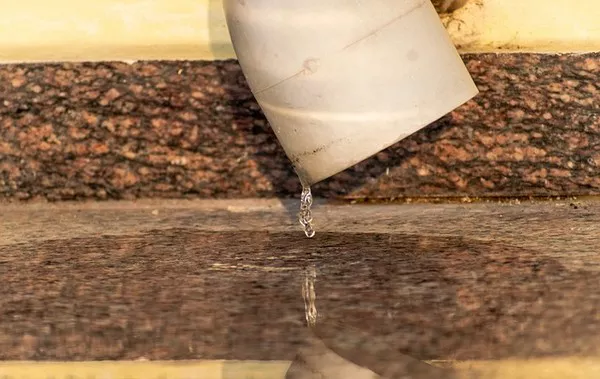In the quest for sustainable and eco-friendly wastewater treatment methods, algae have emerged as a promising ally. Algae, a diverse group of aquatic organisms ranging from microscopic phytoplankton to large seaweeds, have the unique ability to utilize nutrients like nitrogen and phosphorus found in sewage for growth while simultaneously aiding in the purification of water. This article explores the potential of using algae in sewage treatment, discussing different types of algae utilized, their roles in the treatment process, and the environmental benefits they offer.
The Need for Innovative Wastewater Treatment
Traditional methods of wastewater treatment, such as activated sludge processes and chemical treatments, often require significant energy inputs and can generate waste products or by-products that need further management. Moreover, these methods may not effectively remove all nutrients and pollutants, leading to concerns about water quality in receiving environments. In this context, algae-based treatment systems offer a sustainable alternative that leverages the natural ability of algae to thrive on nutrients like nitrogen and phosphorus, which are common pollutants in sewage.
Types of Algae Used in Sewage Treatment
Algae used in sewage treatment can be broadly classified into microalgae and macroalgae, each with its unique characteristics and applications.
1. Microalgae:
Microalgae are unicellular or colonial algae that are microscopic in size. They include diverse groups like green algae, diatoms, and blue-green algae (cyanobacteria). Microalgae are particularly favored in sewage treatment due to their rapid growth rates and high nutrient uptake capabilities. They can efficiently remove nitrogen, phosphorus, and organic pollutants from wastewater. Common microalgae species used in sewage treatment include:
Chlorella: Known for its rapid growth and ability to accumulate nutrients, Chlorella is often used in nutrient removal systems.
Spirulina (Arthrospira): A type of cyanobacteria, Spirulina is capable of thriving in nutrient-rich environments and can be used for both nutrient removal and biomass production.
Scenedesmus: This genus of green algae is widely used in wastewater treatment due to its high growth rate and nutrient uptake efficiency.
2. Macroalgae (Seaweeds):
Macroalgae, also known as seaweeds, are multicellular algae that are larger and more visible compared to microalgae. They are commonly used in wastewater treatment systems, especially in constructed wetlands, where they contribute to nutrient uptake and provide habitat for microorganisms. Some popular macroalgae species used in sewage treatment include:
Ulva (Sea Lettuce): Ulva species are efficient in nutrient removal and are often employed in integrated algae-based systems for wastewater treatment.
Gracilaria: This red seaweed is known for its ability to accumulate nutrients and has been used in pilot-scale wastewater treatment projects.
Algae’s Role in Sewage Treatment
Algae play several crucial roles in sewage treatment processes, which contribute to the overall efficiency and sustainability of wastewater treatment systems:
1. Nutrient Uptake:
Algae have a natural affinity for nutrients like nitrogen and phosphorus, which are abundant in sewage. By harnessing algae’s ability to take up these nutrients, wastewater treatment systems can significantly reduce nutrient concentrations in effluent water, thus minimizing environmental impacts such as eutrophication in receiving water bodies.
2. Oxygen Production:
During photosynthesis, algae release oxygen into the water, which can help improve the overall dissolved oxygen levels in wastewater. This is particularly beneficial in aerated lagoons or ponds where algae can enhance oxygenation and support aerobic microbial activity.
3. Biomass Production:
Algae can accumulate biomass rapidly, making them a potential source of bioenergy or biofertilizers. Harvested algae biomass can be used for various purposes, including biofuel production, animal feed, or soil amendment.
4. Water Filtration:
Algae can effectively filter suspended solids and organic matter from wastewater, improving water clarity and reducing the load on downstream treatment processes.
Algae-Based Treatment Systems
Algae can be integrated into various sewage treatment systems, ranging from simple pond-based systems to more sophisticated photobioreactors. Common configurations include:
1. Algae Ponds:
Large-scale algae ponds are among the simplest and most cost-effective systems for algae-based sewage treatment. Wastewater is circulated through shallow ponds where algae naturally grow and remove nutrients. These systems are relatively low-maintenance and can be integrated into existing treatment plants.
2. Photobioreactors:
Photobioreactors provide a controlled environment for algae cultivation, optimizing growth conditions such as light, temperature, and nutrient availability. This allows for higher algae biomass production and nutrient removal efficiency but can be more capital-intensive.
3. Constructed Wetlands:
In constructed wetlands, algae are grown alongside emergent plants like cattails or bulrushes. This integrated approach enhances nutrient removal while providing additional habitat and biodiversity benefits.
Environmental Benefits of Algae-Based Sewage Treatment
The use of algae in sewage treatment offers several environmental advantages over conventional methods:
Energy Efficiency: Algae-based systems can be energy-neutral or even energy-positive, as algae can be used to produce biofuels or biogas.
Carbon Sequestration: Algae capture carbon dioxide during photosynthesis, helping to mitigate greenhouse gas emissions.
Natural Treatment Processes: Algae-based systems mimic natural ecosystems and can enhance biodiversity in treated water bodies.
Reduced Chemical Usage: Algae-based treatment reduces the need for chemical additives, minimizing the generation of secondary pollutants.
Challenges and Future Directions
While algae-based sewage treatment holds great promise, several challenges remain, including:
System Design: Optimizing the design of algae-based treatment systems to maximize efficiency and scalability.
Harvesting and Processing: Developing cost-effective methods for harvesting and processing algae biomass.
Nutrient Recovery: Exploring strategies for recovering and recycling nutrients from algae biomass.
In the future, advancements in biotechnology, materials science, and system engineering are likely to drive innovation in algae-based sewage treatment, making it an integral component of sustainable wastewater management.
Conclusion
Algae-based sewage treatment represents a paradigm shift in wastewater management, offering a natural, efficient, and sustainable solution to nutrient pollution. By harnessing the unique capabilities of algae, we can transform sewage treatment into a regenerative process that benefits both the environment and society. As research and development in this field continue to expand, algae-based technologies are poised to play a pivotal role in shaping the future of water resource management.

